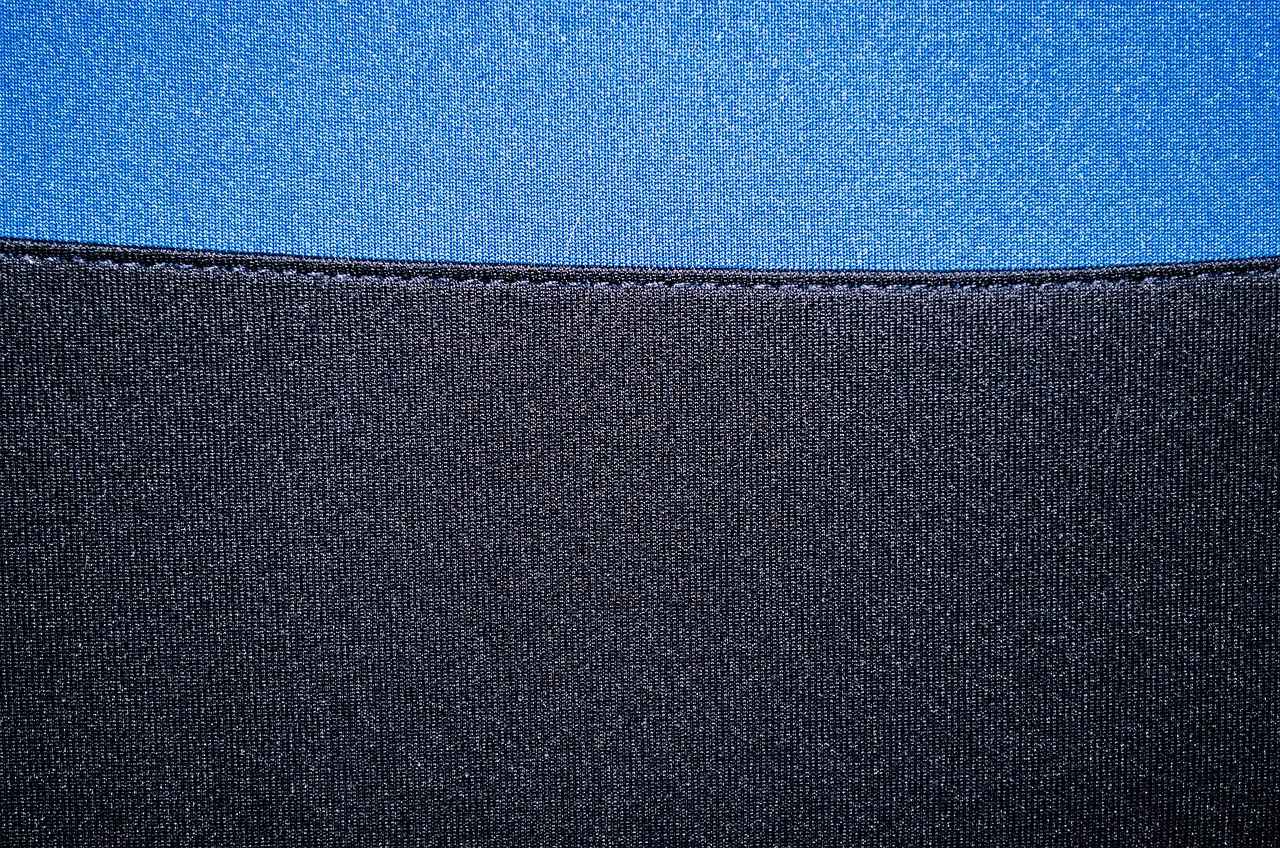This article delves into the best practices for using a steamer on delicate slip dresses, focusing on how to effectively remove wrinkles while preserving the fabric’s integrity. Slip dresses, often made from luxurious materials, require special care to maintain their beauty and structure.
Why Use a Steamer for Slip Dresses?
Steamers are considered gentle on delicate fabrics, making them ideal for slip dresses. Unlike traditional irons, steamers effectively remove wrinkles without the risk of scorching the fabric. This method ensures that your garment looks its best without compromising its texture or quality.
What Fabrics Are Considered Delicate?
Understanding which fabrics are classified as delicate is crucial for effective steaming. Common materials include:
- Silk
- Chiffon
- Lace
Each of these fabrics requires special care when steaming to avoid damage.
How to Prepare Your Steamer
Before you begin steaming, proper preparation of your steamer is essential. Here are the steps:
- Fill the steamer with distilled water to prevent mineral buildup.
- Plug it in and allow it to heat up adequately for optimal results.
Steps to Steam a Slip Dress Safely
Follow these systematic steps to ensure you handle your garment with care while achieving a wrinkle-free finish:
- Hang the Dress Properly: Use a sturdy hanger and hang your slip dress in a well-lit area to see wrinkles clearly.
- Maintain a Safe Distance: Keep the steamer at least a few inches away from the fabric to prevent direct contact, which could lead to damage.
Common Mistakes to Avoid When Steaming
Being aware of common pitfalls can save your delicate slip dress from potential damage. Avoid these mistakes:
- Steaming too close to the fabric.
- Using tap water instead of distilled water.
- Not allowing the steamer to heat up properly.
How to Care for Your Steamer
Regular maintenance of your steamer is vital for longevity and performance. Clean it after each use and check for mineral buildup to ensure it operates smoothly. This will help you achieve the best results every time you steam your garments.
When to Seek Professional Help
Sometimes, a delicate slip dress may require professional cleaning or steaming. Recognizing when to seek expert help can prevent damage to your cherished garment. If you notice stubborn wrinkles or stains, it may be time to consult a professional.
Alternative Methods for Removing Wrinkles
If steaming isn’t an option, consider these alternative methods:
- Hang your dress in a steamy bathroom after a hot shower.
- Use a damp cloth to gently press out wrinkles.
Final Tips for Maintaining Your Slip Dress
Proper care extends beyond steaming. Regular maintenance, such as washing according to care labels and storing correctly, can prolong the life of your delicate slip dress. Always ensure it is stored in a cool, dry place away from direct sunlight.

Why Use a Steamer for Slip Dresses?
When it comes to maintaining the beauty of your slip dresses, using a steamer is one of the best practices you can adopt. Steamers are incredibly gentle on delicate fabrics, making them the ideal choice for ensuring your garment remains in pristine condition. Unlike traditional irons, steamers effectively remove wrinkles without the risk of scorching or damaging the fabric. This is particularly important for slip dresses, which are often made from luxurious materials that require special care.
Steamers work by utilizing hot vapor to relax the fibers of the fabric, allowing wrinkles to fall away effortlessly. This method is especially beneficial for fabrics like silk, chiffon, and lace, which are commonly used in slip dresses. By choosing to steam rather than iron, you can maintain the integrity of these delicate materials.
- Gentle on Fabrics: Steamers provide a soft touch, ensuring that even the most delicate fabrics are treated with care.
- Quick and Efficient: Steaming is often faster than ironing, allowing you to get ready in less time.
- Versatile: Steamers can be used on a variety of fabrics, not just slip dresses, making them a valuable addition to your wardrobe care routine.
One of the primary concerns when caring for delicate fabrics is the potential for burns or marks. A steamer minimizes this risk by allowing you to maintain a safe distance from the fabric. This distance is crucial, as it prevents direct contact that could lead to damage. Furthermore, the moisture from the steam helps to hydrate the fibers, which can enhance the overall appearance of the dress.
While most slip dresses can be safely steamed, it is essential to check the care label for specific instructions. Fabrics such as polyester and nylon are generally safe to steam, while some blends may require more caution. Always test a small, inconspicuous area first to ensure that the fabric responds well to steaming.
- Hang the Dress: Use a sturdy hanger to keep the dress suspended, allowing gravity to assist in the removal of wrinkles.
- Keep a Safe Distance: Maintain a few inches between the steamer and the fabric to avoid any potential damage.
- Use the Right Temperature: Ensure your steamer is set to the appropriate heat level for the fabric you are working with.
It’s important to avoid common mistakes that can lead to fabric damage. Do not hold the steamer too close to the fabric, as this can cause burns or water spots. Additionally, avoid steaming over embellishments or seams, as these areas may be more susceptible to damage.
Using a steamer for slip dresses is a highly effective method for maintaining their beauty and prolonging their life. By following the tips mentioned above and understanding the unique needs of delicate fabrics, you can ensure that your slip dresses remain as stunning as the day you bought them. Embrace the benefits of steaming and keep your wardrobe looking fresh and elegant.

What Fabrics Are Considered Delicate?
Understanding which fabrics are classified as delicate is crucial for anyone who wants to maintain the quality and appearance of their garments. Delicate fabrics require special care and attention, particularly when it comes to steaming. This article will delve into the most common delicate materials, their characteristics, and the best practices for handling them.
Delicate fabrics are those that can easily be damaged by heat, friction, or harsh cleaning methods. Here are some of the most common materials classified as delicate:
- Silk: Known for its luxurious feel and lustrous appearance, silk is a natural protein fiber that requires gentle handling. It is prone to water spots and can lose its sheen if not steamed properly.
- Chiffon: This lightweight, sheer fabric is often made from silk or polyester. Chiffon is highly susceptible to wrinkles, making it a popular choice for elegant dresses. However, its delicate nature means it can be easily damaged if not treated with care.
- Lace: With its intricate patterns and delicate threads, lace adds a touch of elegance to any outfit. It is often used as an overlay on dresses and tops but can tear or fray if subjected to excessive heat or rough handling.
- Tulle: This soft, netted fabric is commonly used in skirts and veils. While tulle is lightweight and airy, it can easily become misshapen if not steamed correctly.
- Organza: Similar to chiffon but crisper, organza is often used for formal wear. It can hold its shape well but is also vulnerable to scorching if too much heat is applied.
Recognizing delicate fabrics is essential for proper garment care. Using the wrong cleaning method or tool can lead to irreversible damage. For example, using an iron on silk can result in burns and shiny spots, while steamers are a gentler option that can refresh the fabric without the risk of damage.
When caring for delicate fabrics, consider the following tips:
- Always check care labels: Before steaming or washing, verify the manufacturer’s instructions to avoid any mishaps.
- Use a steamer: Steamers are ideal for delicate fabrics as they provide moisture without direct contact, minimizing the risk of burns.
- Hang garments properly: Use padded hangers to prevent stretching and distortion of delicate fabrics.
- Store carefully: Keep delicate items in breathable garment bags or wrapped in acid-free tissue paper to protect them from dust and damage.
Neglecting the care of delicate fabrics can lead to various issues, including:
- Color fading: Improper washing or exposure to sunlight can cause colors to dull over time.
- Loss of shape: Delicate fabrics can lose their intended silhouette if not stored and handled correctly.
- Permanent damage: Tears, burns, and other forms of damage can render a garment unusable.
In summary, understanding which fabrics are considered delicate is vital for preserving the integrity of your garments. By taking the necessary precautions and employing suitable care methods, you can ensure that your delicate items remain in excellent condition for years to come.
Silk Slip Dresses
are a timeless wardrobe staple, known for their luxurious feel and elegant drape. However, caring for silk requires a delicate touch to maintain its beauty and integrity. This article delves into the best practices for handling and steaming silk slip dresses, ensuring they remain in pristine condition.
Silk is favored for its breathable and lightweight properties, making it perfect for various occasions. Its natural sheen adds a touch of sophistication, while its smooth texture feels wonderful against the skin. However, the very qualities that make silk desirable also mean it requires special care.
Steaming is a gentle way to refresh silk slip dresses without the risk of scorching or damaging the delicate fibers. Unlike traditional ironing, which can flatten the fabric and leave shiny marks, steaming allows the fabric to retain its natural texture and flow. This method also helps eliminate odors, making it a preferred choice for maintaining your favorite silk pieces.
- Prepare Your Steamer: Fill the steamer with distilled water to prevent mineral buildup, which can affect performance.
- Hang the Dress: Use a sturdy hanger to hang your silk slip dress in a well-lit area, allowing you to see all the wrinkles clearly.
- Maintain Distance: Hold the steamer about 6 inches away from the fabric to avoid direct contact, which can cause water spots.
- Use Gentle Movements: Glide the steamer slowly down the fabric, allowing the steam to penetrate and relax the fibers.
While steaming is effective, there are some common mistakes to avoid:
- Steaming Too Close: Keeping the steamer too close can lead to burns or water spots.
- Ignoring Fabric Care Labels: Always check the care label for specific instructions regarding steaming and temperature settings.
- Skipping Regular Maintenance: Regularly clean your steamer to ensure it functions properly and avoids any residue transfer to your dress.
If steaming is not an option, consider these alternatives:
- Hanging in a Steamy Bathroom: Hang your dress in the bathroom while you take a hot shower. The steam can help relax wrinkles naturally.
- Using a Damp Cloth: Lightly dampen a clean cloth and gently press it against the fabric, being careful not to rub.
For particularly stubborn wrinkles or if your silk slip dress has delicate embellishments, it may be wise to seek professional cleaning services. Experts can ensure that your garment is treated with the utmost care, preserving its beauty for years to come.
To keep your silk slip dress looking its best, consider the following maintenance tips:
- Store Properly: Keep your silk dress in a cool, dry place, away from direct sunlight to prevent fading.
- Wash with Care: Follow care label instructions for washing, and opt for hand washing or delicate cycles.
- Rotate Your Wardrobe: Give your silk dresses a break by rotating them with other garments to avoid wear and tear.
Chiffon Slip Dresses
are a popular choice for their ethereal beauty and lightness, making them perfect for various occasions. However, their delicate nature requires special attention, especially when it comes to removing wrinkles. Understanding how to properly steam chiffon can help maintain its stunning silhouette while ensuring the fabric remains in excellent condition.
Chiffon is a lightweight, sheer fabric often made from silk or polyester. Its loosely woven structure contributes to its tendency to wrinkle easily. While this characteristic can be a drawback, it also adds to the dress’s romantic appeal. Therefore, knowing how to treat these wrinkles effectively is essential for any chiffon dress owner.
Using a steamer is one of the best methods to remove wrinkles from chiffon. Unlike traditional irons, steamers apply heat and moisture gently, which helps relax the fibers without the risk of burning. This technique is particularly beneficial for chiffon, as it preserves the fabric’s flowy silhouette and delicate texture.
- Prepare Your Steamer: Fill the steamer with distilled water to prevent mineral buildup. Allow it to heat up completely for optimal steaming.
- Hang the Dress: Use a sturdy hanger to hang your chiffon slip dress in a well-lit area. This allows gravity to assist in the steaming process.
- Maintain Distance: Hold the steamer at least 6 inches away from the fabric. This distance prevents direct contact, which could cause water spots or damage.
- Steam from Top to Bottom: Start at the top of the dress and work your way down, allowing the steam to penetrate the fabric and relax the wrinkles.
- Check for Remaining Wrinkles: After steaming, inspect the dress for any stubborn wrinkles. If necessary, repeat the steaming process on those areas.
To ensure the best results, avoid these common mistakes:
- Steaming Too Close: Getting too close can lead to burns or water spots.
- Oversteaming: Excessive steam can cause the fabric to become waterlogged, leading to further wrinkles.
- Ignoring Care Labels: Always check the care label for specific instructions regarding steaming.
If a steamer isn’t available, consider these alternatives:
- Hang in a Steamy Bathroom: The moisture from a hot shower can help relax wrinkles.
- Use a Damp Cloth: Place a damp cloth over the chiffon and gently press with an iron on a low setting, ensuring no contact with the fabric.
Proper care extends beyond steaming. Always wash chiffon according to the care label, typically by hand or on a gentle cycle. Store your dress in a cool, dry place, preferably hanging, to prevent further wrinkling.
By following these guidelines, you can keep your chiffon slip dress looking stunning and ready for any occasion. Regular maintenance and careful steaming will not only preserve its beauty but also extend its lifespan, allowing you to enjoy this delicate garment for years to come.

How to Prepare Your Steamer
When it comes to steaming delicate slip dresses, preparation is key. Ensuring your steamer is ready for use can make all the difference in achieving a beautifully wrinkle-free garment. Here’s a comprehensive guide on how to prepare your steamer effectively.
Proper preparation of your steamer is essential for several reasons. First, it ensures that the steam produced is consistent and effective for removing wrinkles. Second, it helps to avoid any potential damage to your delicate fabrics, as inadequate heating can lead to water spots or uneven steaming.
- Fill the Water Tank: Begin by filling the water tank of your steamer with distilled water. Using distilled water helps prevent mineral buildup, which can affect the steamer’s performance.
- Check for Leaks: Before turning on your steamer, check for any leaks in the water tank or hose. This will ensure that you can steam without interruptions.
- Plug It In: Connect the steamer to a power source. Make sure the cord is not in a location where it could be tripped over or damaged.
- Allow It to Heat Up: Turn on the steamer and allow it to heat up for at least 2-5 minutes. This waiting period is crucial as it allows the water to convert into steam.
- Test the Steam: Before you start steaming your dress, test the steam by holding the nozzle away from any fabric. This will help you gauge the steam’s intensity and ensure it’s ready for use.
If you notice that your steamer is not heating up as expected, check the following:
- Power Source: Ensure that it is plugged in properly and that the outlet is functioning.
- Water Level: Confirm that there is enough water in the tank. A low water level can prevent the steamer from generating steam.
- Mineral Buildup: Regularly clean your steamer to prevent mineral deposits from clogging the system. Refer to the manufacturer’s instructions for cleaning guidance.
Once your steamer is prepared, consider these tips for effective steaming:
- Use the Right Technique: Hold the steamer vertically and keep it a few inches away from the fabric to avoid direct contact.
- Work in Sections: Steam one section at a time, moving slowly to allow the steam to penetrate the fabric.
- Finish with a Cool Down: After steaming, let the dress hang for a few minutes. This allows the fabric to settle and helps maintain the smooth finish.
To ensure your steamer remains in optimal condition, it’s essential to perform regular maintenance. After each use, empty any remaining water from the tank and clean the steam head to prevent buildup. This simple practice can extend the life of your steamer and improve its efficiency.
By following these preparation steps and tips, you can confidently steam your delicate slip dresses, ensuring they look their best while maintaining their integrity.

Steps to Steam a Slip Dress Safely
Steaming a slip dress can seem daunting, especially when considering the delicate nature of the fabric. However, following a systematic approach is key to achieving a wrinkle-free finish while ensuring the garment’s integrity is preserved. Here are the essential steps to steam your slip dress safely and effectively.
- Steamer: Ensure your steamer is suitable for delicate fabrics.
- Hanger: Use a sturdy hanger to hang your dress.
- Distilled Water: This helps prevent mineral buildup in your steamer.
- Cloth or Towel: For any potential excess moisture.
Before you begin, fill your steamer with distilled water and plug it in. Allow it to heat up according to the manufacturer’s instructions. This step is crucial as it ensures the steam is hot enough to effectively remove wrinkles without damaging the fabric.
Carefully hang your slip dress on a sturdy hanger in a well-lit area. This allows gravity to help in the steaming process, making it easier to identify and target wrinkles. Ensure the dress is fully extended and not bunched up.
When you start steaming, keep the steamer at least 6 inches away from the fabric. This distance is vital to prevent water spots and potential burns on delicate materials. Move the steamer in a downward motion, allowing the steam to penetrate the fabric gently.
Work on one section of the dress at a time. Start from the top and move downwards, focusing on areas with the most wrinkles. Use your free hand to gently pull the fabric taut, allowing the steam to work effectively. Remember to avoid lingering too long in one spot.
If you are concerned about the direct application of steam, you can place a thin cloth between the steamer and the fabric. This provides an extra layer of protection, ensuring that the delicate fibers are safe while still allowing steam to pass through.
After steaming, let the dress hang for a few minutes to ensure any residual moisture evaporates. This step is important to prevent any water spots or dampness that could affect the fabric’s appearance.
Once your slip dress is wrinkle-free and dry, store it properly to maintain its shape. Use padded hangers to avoid any creases and keep it in a cool, dry place away from direct sunlight.
- Steaming Too Close: Always maintain a safe distance to prevent damage.
- Ignoring Fabric Care Labels: Always check the care instructions before steaming.
- Using Tap Water: This can lead to mineral buildup in your steamer.
By following these steps, you can effectively steam your slip dress, ensuring it looks pristine without compromising the fabric’s quality. Embrace the process, and your delicate garment will thank you!
Hang the Dress Properly
When it comes to maintaining the elegance of your slip dress, proper hanging techniques play a crucial role. Hanging your slip dress on a sturdy hanger allows gravity to assist in the steaming process, making it easier to eliminate those pesky wrinkles. This method not only helps in achieving a smooth appearance but also protects the integrity of the fabric.
To start, choose a high-quality hanger that can support the weight of your slip dress without bending or warping. Wooden or padded hangers are excellent choices as they provide better support compared to plastic ones. Once you have your hanger ready, gently drape the slip dress over it, ensuring that the straps are positioned correctly to avoid any unwanted creases.
Next, it’s important to hang the dress in a well-lit area. Adequate lighting will allow you to see the wrinkles clearly, ensuring you can focus your steaming efforts where they are needed most. Positioning the dress in a spot with natural light can also help you assess its overall appearance, making it easier to spot any areas that require extra attention.
While hanging the dress, take a moment to inspect the fabric for any stains or marks. If you notice any, it’s advisable to treat them before steaming. This will prevent the stains from setting further during the steaming process. Additionally, ensure that the dress is not touching any surfaces that could transfer dirt or oils onto the fabric.
Once your slip dress is properly hung and inspected, you’re ready to start the steaming process. Using a steamer is an ideal way to refresh your slip dress, as it gently relaxes the fabric fibers without the risk of scorching. Always remember to maintain a safe distance between the steamer and the fabric, typically around 6 to 12 inches. This distance prevents direct contact, which can lead to water spots or damage to delicate materials.
As you steam, move the nozzle in a downward motion, allowing the steam to penetrate the fabric. Focus on areas where wrinkles are most pronounced, but avoid lingering too long in one spot to prevent any potential harm to the fabric. The combination of gravity and steam will work together to smooth out those creases effectively.
After steaming, give the dress a gentle shake to help the fabric settle into its newly refreshed state. This step is particularly important for slip dresses made from lightweight materials like chiffon or silk, as it enhances their natural drape and flow.
In summary, hanging your slip dress properly is an essential part of the steaming process. By using a sturdy hanger and positioning the dress in a well-lit area, you can ensure that you effectively remove wrinkles while maintaining the beauty and integrity of the fabric. With these techniques in mind, your slip dress will always look its best, ready for any occasion.
Maintain a Safe Distance
When it comes to maintaining the beauty of your delicate slip dress, using a steamer is one of the most effective methods. However, understanding the importance of maintaining a safe distance while steaming is crucial for preserving the quality of the fabric. This section will delve into why keeping the steamer a few inches away from your garment is essential and how to do it effectively.
Keeping the steamer at least a few inches away from the fabric is important for several reasons:
- Prevents Direct Contact: Direct contact between the steamer and the fabric can lead to burns or scorch marks, which can ruin the appearance of your slip dress.
- Avoids Water Spots: Steaming too close can result in excess moisture being deposited on the fabric, causing unsightly water spots that are difficult to remove.
- Maintains Fabric Integrity: Delicate materials, such as silk and chiffon, are particularly susceptible to heat damage. A safe distance ensures the fibers remain intact and the fabric retains its luxurious feel.
To effectively steam your slip dress while maintaining a safe distance, follow these practical tips:
- Adjust the Steamer’s Nozzle: Most steamers come with adjustable nozzles. Use this feature to control the steam output and direct it towards the fabric without getting too close.
- Use Your Hand as a Guide: Hold your hand between the steamer and the dress to gauge the distance. This will help you avoid getting too close while still allowing the steam to reach the fabric.
- Steaming in Sections: Instead of trying to steam the entire garment at once, focus on one section at a time. This method allows you to maintain control over the distance and ensures thorough steaming.
By keeping a safe distance while steaming, you can enjoy several benefits:
- Enhanced Appearance: Your slip dress will look polished and fresh without any signs of damage.
- Longer Lifespan: Taking care not to damage the fabric will prolong the life of your garment, allowing you to enjoy it for many occasions.
- Confidence in Care: Knowing how to properly steam your dress gives you confidence in your ability to maintain its beauty.
If you realize that you have accidentally steamed too close to the fabric, here are some steps to mitigate damage:
- Assess the Damage: Check for any burns or water spots immediately after steaming.
- Gently Blot: If water spots appear, gently blot the area with a clean, dry cloth to absorb excess moisture.
- Seek Professional Help: If the damage is significant, consider taking your slip dress to a professional cleaner who specializes in delicate fabrics.
In conclusion, maintaining a safe distance while steaming your delicate slip dress is essential for preserving its beauty and integrity. By following these guidelines, you can ensure that your garment remains in pristine condition, allowing you to wear it with confidence for years to come.

Common Mistakes to Avoid When Steaming
When it comes to caring for your delicate slip dress, understanding the can make all the difference. Many people underestimate the importance of proper steaming techniques, which can lead to irreversible damage to their cherished garments. Here, we delve into the key pitfalls to steer clear of, ensuring your slip dress remains in pristine condition.
Steaming is a preferred method for removing wrinkles from delicate fabrics because it is gentle and effective. However, improper techniques can cause scorching, water spots, or even fabric distortion. Understanding the right approach is essential to maintaining the integrity of your slip dress.
- Using Too Much Heat: One of the most significant mistakes is using a steamer on a high setting. Many delicate fabrics, such as silk and chiffon, can be damaged by excessive heat. Always start with a lower setting and adjust as necessary.
- Getting Too Close: Maintaining a safe distance between the steamer and the fabric is crucial. Holding the steamer too close can lead to water spots and potential burns on the fabric. Aim for at least 6 inches of distance to allow the steam to gently relax the fibers.
- Neglecting to Hang the Dress: Steaming a slip dress while it’s lying flat can lead to uneven results. Always hang your dress on a sturdy hanger in a well-lit area to ensure that you can see and target the wrinkles effectively.
- Ignoring Fabric Care Labels: Each fabric has specific care instructions, and ignoring these can lead to mishaps. Always check the care label before steaming to understand the appropriate methods for your particular fabric.
- Steaming in a Rush: Patience is key when steaming delicate fabrics. Rushing through the process can lead to missed wrinkles and accidental damage. Take your time to ensure every part of the dress is treated with care.
- Not Cleaning the Steamer: A dirty steamer can leave mineral deposits on your dress. Regularly clean your steamer according to the manufacturer’s instructions to ensure it operates efficiently and does not transfer unwanted residues onto your fabric.
To ensure that you are steaming your slip dress correctly, consider the following tips:
- Always test the steamer on a small, inconspicuous area of the fabric first to gauge how it reacts.
- Use distilled water in your steamer to minimize mineral buildup and prevent spotting.
- Steam in a well-ventilated area to allow moisture to dissipate quickly, reducing the risk of water spots.
- Use a soft brush attachment if your steamer has one, as it can help distribute steam evenly across the fabric.
By avoiding these common mistakes and following best practices, you can effectively steam your delicate slip dress without compromising its beauty or integrity. Remember, a little care goes a long way in preserving your favorite garments.

How to Care for Your Steamer
Taking proper care of your steamer is essential for ensuring its longevity and optimal performance. Regular maintenance not only prolongs the life of your appliance but also guarantees that it functions effectively whenever you need it. Here are some key practices to follow:
- Clean After Each Use: It is crucial to clean your steamer after every use. This involves emptying the water tank and wiping down the exterior. Residual water can lead to mineral buildup, which may affect the steamer’s efficiency.
- Check for Mineral Buildup: Over time, minerals from tap water can accumulate inside the steamer. To prevent this, regularly check the water reservoir and the steam nozzle for any signs of buildup. Using distilled water can significantly reduce the risk of mineral deposits.
- Descale Your Steamer: If you notice a decrease in steam output or any blockages, it may be time to descale your steamer. You can do this by filling the tank with a mixture of equal parts water and white vinegar. Let it sit for about 30 minutes, then flush the steamer with clean water.
- Store Properly: When not in use, ensure that your steamer is stored in a dry and cool place. Avoid coiling the power cord tightly around the device, as this can cause damage over time. Instead, loosely wrap the cord to maintain its integrity.
- Inspect Regularly: Periodically inspect your steamer for any signs of wear and tear. Check the power cord, steam nozzle, and water tank for any cracks or damages. Addressing these issues early can prevent further complications.
Why is Regular Maintenance Important? Regular maintenance of your steamer is vital for ensuring it operates smoothly and efficiently. A well-maintained steamer not only saves you time and effort but also enhances the quality of the steaming process. This is particularly important when dealing with delicate fabrics like slip dresses, where any malfunction could lead to damage.
What Happens if You Neglect Maintenance? Neglecting the maintenance of your steamer can lead to various issues. You may experience reduced steam output, which can make it difficult to remove wrinkles effectively. Additionally, mineral buildup can lead to clogging, resulting in uneven steam distribution or even permanent damage to your appliance.
Expert Tips for Enhanced Care: Consider using a steamer with a self-cleaning feature if you frequently steam delicate fabrics. This feature can help remove mineral deposits without requiring manual intervention. Additionally, always refer to the manufacturer’s guidelines for specific care instructions tailored to your model.
In summary, regular maintenance of your steamer is essential for its longevity and performance. By following these guidelines, you can ensure that your steamer remains in excellent condition, ready to tackle any wrinkles that come its way.

When to Seek Professional Help
When it comes to caring for your delicate slip dress, knowing is crucial. These garments often require special attention due to their sensitive fabrics, such as silk, chiffon, or lace. While some minor wrinkles can be easily managed at home with a steamer, there are situations where professional cleaning or steaming is the best option to preserve the integrity of your cherished attire.
- Stubborn Stains: If your slip dress has stubborn stains that won’t budge, it’s time to call in the experts. Home remedies can sometimes worsen the stain or damage the fabric.
- Delicate Fabrics: Fabrics like silk and chiffon, which are prone to damage from improper handling, should be cleaned by professionals who understand how to treat these materials.
- Complex Embellishments: Dresses with intricate lacework, beading, or embroidery require special handling. A professional cleaner will know the best methods to ensure these elements remain intact.
- Unusual Odors: If your slip dress has absorbed odors that are not removed through regular washing, a professional cleaning can help eliminate these smells effectively.
- Age and Wear: Older dresses or those that have been worn frequently may need a thorough cleaning to restore their original beauty.
Choosing professional cleaning services for your slip dress can offer numerous benefits:
- Specialized Techniques: Professionals use techniques tailored to the specific fabric of your dress, ensuring that it is cleaned without damage.
- Advanced Equipment: Professional cleaners have access to advanced equipment and cleaning solutions that are not available for home use, providing a deeper clean.
- Expert Knowledge: Experienced cleaners understand how to treat various stains and fabrics, giving you peace of mind that your dress is in good hands.
In addition to cleaning, there are instances where professional steaming is advisable:
- High-Quality Fabrics: For high-end fabrics, professional steaming can ensure that creases are removed without risking damage that might occur with home steaming.
- Restoration Needs: If your dress has lost its shape or luster, a professional steamer can help restore its original appearance.
While seeking professional help may seem costly, consider it an investment in your wardrobe. The price for cleaning and steaming can vary based on the fabric type, the complexity of the dress, and the service provider. Always ask for a quote before proceeding, so you can make an informed decision.
When selecting a professional cleaning service for your slip dress, consider the following:
- Reputation: Look for reviews and testimonials from previous customers to gauge the quality of service.
- Experience: Choose a cleaner who specializes in delicate fabrics and has a proven track record of handling similar garments.
- Certifications: Ensure the cleaning service is certified and follows industry standards for garment care.
In summary, understanding for your delicate slip dress can save you from potential damage and help maintain its beauty for years to come. By recognizing the signs that indicate the need for expert care, you can ensure your cherished garment remains in pristine condition.

Alternative Methods for Removing Wrinkles
When it comes to maintaining the pristine look of your delicate slip dress, steaming is often the go-to method. However, if you find yourself without a steamer, don’t worry! There are several alternative methods for removing wrinkles that can prove equally effective.
If steaming isn’t an option, you can explore various techniques that utilize everyday items and environments. These methods can help you achieve a wrinkle-free look without risking damage to your delicate fabric.
One of the simplest alternatives is to hang your slip dress in a steamy bathroom. The steam generated from a hot shower can help relax the fibers in your fabric, making it easier to smooth out wrinkles. Here’s how to do it:
- Close the bathroom door to trap steam.
- Hang your dress on a sturdy hanger, ensuring it’s not touching any surfaces.
- Turn on the hot water and let the steam build up for about 10-15 minutes.
- Remove the dress and gently tug at the wrinkles to help them fall out.
Another effective method is to use a damp cloth. This technique involves slightly moistening a clean cloth and placing it over the wrinkled areas of the dress. Here’s a step-by-step guide:
- Lightly dampen a clean, soft cloth with water.
- Lay the damp cloth over the wrinkled areas of the dress.
- Gently press down with your hands, allowing the moisture to penetrate the fabric.
- Remove the cloth and check for remaining wrinkles; repeat if necessary.
If you must use an iron, ensure it has a low heat setting and is suitable for delicate fabrics. Here’s how to safely iron a slip dress:
- Turn the dress inside out to protect the outer fabric.
- Place a thin cloth over the dress to act as a barrier.
- Gently glide the iron over the cloth, avoiding direct contact with the fabric.
A hair dryer can also serve as a handy alternative. Here’s how to use it effectively:
- Hang the dress on a hanger.
- Set the hair dryer to a cool or low heat setting.
- Hold it at a distance of about 6-12 inches from the fabric and move it around to avoid overheating any one area.
- Gently tug at the fabric as you dry to help release wrinkles.
For a quick fix, try the ice cube trick. Place a few ice cubes in the dryer along with your dress, and run it on a low heat setting for about 10-15 minutes. The melting ice will create steam, which can help release wrinkles.
Sometimes, simply hanging your dress in a well-ventilated area can help. Choose a spot with good airflow, and let gravity do the work. This method is especially effective for lightweight fabrics.
By utilizing these alternative methods, you can keep your delicate slip dress looking fabulous without the need for a steamer. Remember to always treat your garment with care to maintain its beauty and longevity.

Final Tips for Maintaining Your Slip Dress
Owning a delicate slip dress is a delightful experience, but ensuring its longevity requires a commitment to proper care. While steaming is an excellent method for removing wrinkles, proper maintenance extends far beyond this technique. Here are some essential tips to help you keep your slip dress looking pristine and beautiful for years to come.
- Follow Care Labels: Always read the care labels attached to your slip dress. These labels provide vital information on washing, drying, and ironing. Adhering to these guidelines can prevent irreversible damage.
- Wash with Care: When it comes to washing your slip dress, opt for a gentle cycle or hand wash with cold water. Use a mild detergent specifically designed for delicate fabrics to maintain the integrity of the material.
- Avoid Harsh Chemicals: Steer clear of bleach and other harsh cleaning agents. These can degrade the fibers and lead to discoloration. Instead, choose eco-friendly, gentle alternatives.
- Storage Matters: How you store your slip dress is crucial. Use padded hangers to prevent stretching and hang it in a cool, dry place away from direct sunlight. If you prefer folding, do so carefully to avoid creases.
- Use Garment Bags: Consider using breathable garment bags for long-term storage. This protects your dress from dust and potential snags while allowing air circulation.
- Ironing with Caution: If your slip dress requires ironing, ensure your iron is set to a low temperature and use a pressing cloth to protect the fabric. This method minimizes the risk of scorching.
- Regular Inspections: Periodically check your dress for any signs of wear, such as loose threads or small tears. Addressing these issues early can prevent more significant problems down the line.
- Professional Cleaning: For particularly stubborn stains or if your dress requires deep cleaning, don’t hesitate to seek professional help. Dry cleaners with experience in handling delicate fabrics can restore your dress without causing damage.
- Rotate Your Wardrobe: If you have multiple slip dresses, rotate their use. This practice reduces wear and tear on any single garment and gives each piece time to rest.
- Mind the Accessories: Be mindful of the accessories you wear with your slip dress. Jewelry with sharp edges or rough textures can snag delicate fabrics, leading to unsightly damage.
By implementing these care tips, you can significantly enhance the lifespan of your delicate slip dress. Remember, regular maintenance is key, and treating your garment with the respect it deserves will keep it looking stunning and fresh for every occasion.
Frequently Asked Questions
- Can I use a steamer on all types of slip dresses?
No, not all slip dresses are suitable for steaming. It’s best to use a steamer on delicate fabrics like silk, chiffon, and lace, as they are more forgiving than heavier materials.
- How far should I hold the steamer from the dress?
Maintain a distance of about 6 inches from the fabric. This prevents direct contact, reducing the risk of burns or water spots that could damage your dress.
- What should I do if my steamer leaves water spots?
If your steamer leaves water spots, try using a lower steam setting or increase the distance. Always test on a small, inconspicuous area first to avoid visible damage.
- How often should I steam my slip dress?
It’s best to steam your slip dress as needed, especially before special occasions. Regular maintenance can help keep it looking fresh and wrinkle-free.
- Are there alternatives to steaming a slip dress?
Absolutely! You can hang your dress in a steamy bathroom or use a damp cloth to gently smooth out wrinkles. These methods can be effective if steaming isn’t an option.



